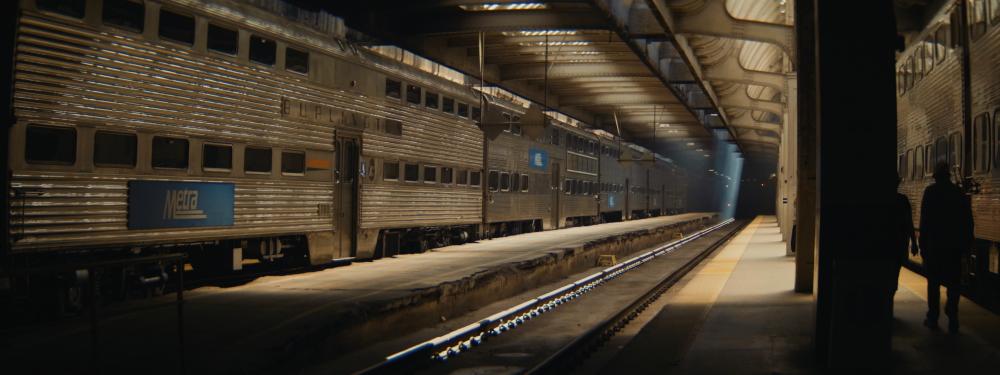Leaderboard
Popular Content
Showing content with the highest reputation on 07/29/2017 in all areas
-

Actually you can make the GH5 look very cinematic!
graphicnatured and 4 others reacted to AaronChicago for a topic
5 points -
That's because what those charts test isn't resolution but resolution of high contrast information. A lens or sensor designed to test well may sacrifice resolution of lower contrast information to do that. ..Then there's the issue of highlight spil and roll-off, which none of the test sites even consider, but which have a huge impact on "aliveness". Film and foveon sensors handle them more or less as the eyes does, which is their images look better when highlights are in frame http://www.13thmonkey.org/~boris/photos/Foveon2/foveon-highlights.html Film tends to handle low contrast resolution better than digital, which is another reason it look can more natural https://www.onlandscape.co.uk/2014/12/36-megapixels-vs-6x7-velvia/2 points
-
Yeah all Nikkor lenses are pretty sweet. I recently bought the 35mm 1.4 and it is crazy good with ML Raw... I think I still have the pre ai 50mm f2... I think I have both the scalloped and the later K version. I'll have to give them a try on the 5D3. Right now I am in the middle of shooting a short with EF lenses, but my next project will be all Nikkor lenses, so your shots are a good reminder to be on the lookout for some good deals. I also used to have the 35-70mm f/3.5 and that was a really nice zoom. It would probably be great speedboosted on the G85. And do you have, or did you have, the ai-s 50mm 1.2? I know a lot of people don't like that lens because it's soft wide open, but I love that dreamy look.2 points
-
Yes. The point of larger screens is that you are supposed to watch them from further away. An 85 might show problems with 4K if you shove your face against it... But that's not what you are supposed to do!2 points
-
Stills to video, need help
scotchtape and one other reacted to meanwhile for a topic
Do you understand the limitations of Panny AF? If you want anything like broadcast quality you are either going to have shoot with no follow focus for each cut or use lenses with the right sort of manual focus control to allow you a chance at doing follow focus. See - Of the lenses you name, I think only the 12-40 has that potential. As someone who has just done similar research, I really think that you are asking the wrong questions and doing the wrong research. You need to start by discovering the absolutely minimum quality needs for the market you want to sell to, a lot of which are about audio. You shouldn't even think about what camera body you should buy until you have budgeted for audio. For example, have you realized that you might easily have to spend $1000 on microphones? You also need to think about how you are going to function as a one man crew trying to do audio - to broadcast standards - and video at the same time. Eg If you need to record groups then you may have to operate a boom mic and leave the camera on a tripod: https://www.premiumbeat.com/blog/record-indie-filmmaking-audio/ I'd start by researching how one man crews function https://www.premiumbeat.com/blog/filmmaking-tip-gear-for-a-one-man-documentary-crew/ and what HBO want quality wise. Not by asking which camera body is nice. Don't even think about that until you really know what you have to spend on audio and lights and whether you'll need real video lenses and a rig with follow focus. And for that you need to know what lighting condtions will be, whether you need to record groups, whether you need to focus on movement. First goals, hence acceptable limitations, then methods, then hardware - and the more I look, the more camera body is one of the least important parts. And most of all, if you want something a real TV company will look at, sound, sound, sound. It matters much more than you think and it is much, much, MUCH more complex. (And I would be delighted if someone who has actual sold video at this level corrects me - life would get simpler!)2 points -
two things: (1) this thread is amazing and (2) @mercer you inspired me to watch little caesar last night and i loved it what a performer2 points
-

My Thoughts Canon 1DXMK2 vs Panasonic Lumix GH5
Fritz Pierre and one other reacted to DBounce for a topic
I spoke to the folks at Veydra, and they told me the cost of producing an anamorphic that would meet their requirements was too high, and so they canned the project. I would have felt much better about dropping $3k on a Veydra anamorphic than an SLR Magic. But right now SLR Magic are really the only game in town for $3k and less.2 points -

Used Canon 1DC
webrunner5 and one other reacted to jgharding for a topic
Tiny fanless camera with ProRes and RAW to SD cards, released in 2013:2 points -
Wrote up a little guide for people new to this and looking to buy their first recorder. And is the way I see the world of low budget recorders is they're ranked like this (starting from worst/cheapest to best/expensive): Tascam DR22WL / Zoom H1 (I'd suggest skipping right over this tier of recorders! But hey, my first ever short film I did years ago was with a chinese shotgun running straight into a Zoom H1!! :-o Shocking but true... everyone starts somewhere!) Tascam DR60D mk2 (the DR60D mk1, before the mk2 came out, is what I myself started out using for no budget shorts as a budding location sound recordist) Tascam DR70D (the *minimum* I'd recommend for a location sound recordist, even if you're just a student / no budget guy. Although in desperate cases, you could scrape by with getting the DR60Dmk2, but doing the opposite and stretching for an F4 is very worthwhile. Certainly, I could travel back in time I'd just have gone straight for the Zoom F4 from the starts! *Except* the F4 didn't come out until a few years later... you live in a very lucky time with so many wonderful options to choose from!) or Tascam DR680 (these can be found at bargain prices secondhand, which is what I did before I then later on purchased a Zoom F4 once that came out & I spotted an F4 at a good price) Zoom F4 / Zoom F8 / Sound Devices MixPre6 (I skip right over the MixPre3, as the MixPre6 is very similar yet does so so much more at only a relatively small extra cost. Also I regard the three of F4/F8/MixPre6 as all on broadly the same level to each other, just varying slightly from each other in one area or another that ones might have a small lead over the other one. This is the tier where I'd see you're now reaching the semi-pro level) Sound Devices 633 / Zaxcom Maxx / Sanosax SX-R4+ (finally you have now got up to the "industry standard" when it comes to recorders people use for small shoots, especially when mixing from the bag. If you're doing this full time as your job or hiring someone who is, then likely this is what is being used. Either that or similar gear, or even something better above this) And if you considering ones priced above those last three.... you're surely doing this full time as a sound recordist and getting a healthy income from that, so why are you asking us here on Frugal Filmmaker? ha! :-P But yes, tonnes and tonnes more options exist at the higher end as well! Finally, if you're considering something in the budget range within what I just covered, but isn't one of those that I mentioned, then it probably is *not* a good idea to buy if you're intending to be a location sound recordist. Something else only might *maybe* make sense if you've got in mind some other purpose for it, such as perhaps you want to record a band in a studio (which has very different needs / constraints), or you're the rare exception which proves the rule, or you are getting lucky finding some amazingly priced deal which can make an otherwise bad purchase decision then make sense if "the price is right". For instance I didn't include the Roland R88, as I feel it is extremely poor value for money in 2017! However.... there was a time at the end of 2016 when the Roland R88 got a huge price drop because it was being discontinued. Even with that massive price drop, the Roland R88 probably still wasn't a smart purchase vs the Zoom F8, but the big drop in price at least made the R88 a somewhat competitive option worth mentioning in a round up of all the various choices. However, that sale is now long since ended, and the prices I see on eBay for a Roland R88 is even higher than what you used to be able to buy it new from B&H Photo! Clearly those eBay sellers are dreaming. Anyway, that was just one example which might have been applicable but isn't now, so I don't rule out the possibilities of something like that perhaps popping up again in the future especially if you very keenly look around for secondhand deals. But for over 95% of people reading this, that won't be applicable, and just stick to going with one of the main ones I mentioned earlier. http://ironfilm.co.nz/which-sound-recorder-to-buy-a-guide-to-various-indie-priced-sound-recorders-in-2017/1 point
-
Actually you can make the GH5 look very cinematic!
AaronChicago reacted to Dave Del Real for a topic
Wow! That looks very nice!1 point -
1080 vs. 4K: What is REALLY necessary?
webrunner5 reacted to PannySVHS for a topic
Holy cow, rewatching the Concrete Island piece from Michael Mills. At 36 seconds- epic shot. Movement within the frame, framing, geometry, light, location. Perfect! And how generous these afficiandos have been on background info, like on this one: Olympus 17mm F1.8 coupled with the AG-LA7200 anamorphic adapter. Camera: GH2 (1080p24, Dynamic B&W Film Mode) Additional filters: Black Pro-Mist 1/4, Red 1 (25) Looking epic, this epic GH2. Check out Andrew Reids GH2 stuff, no ugly muddy LUTs, just nice study of composition, light and movement and lens choice.1 point -
Lenses
TheRenaissanceMan reacted to PannySVHS for a topic
Glenn, I read only the best stuff about the Minolta 35- 70 3.5 Macro, the third version of the 35 70. That might also be a super cool lens speedboosted. I got my 12mm SLR magic now. It´s the first version, the F1.6 one, not the T1.6 version. It has the focus wheel close to the lens mount. At f2.8 it´s reasonably sharp, popping at F4. 1.6 very gloomy, 2.0 already better, half way between 2 and 2.8 not too bad. It´s a fun lens. But boy, it is a beast when it comes to handling movement and geometry and speed of movement. Not easy to master without a tripod. GX85 stabilization does not dampen cheesy camera work. 12mm length is unforgiving when it comes to movement. All in all a great lens, but version 1 is not a resolution wonder above 2.8. Would put it in the same category as Walimex 24mm 1.4. resolution wise. Mechanically it is a joy to use. For handheld shooting the position of the focus ring is also nice ergonomically. All in all a winner for the 190 EUR I paid. Very happy! It´s a beauty on my GX85! With practice the right lens for awesome camera work.1 point -
That reply could be its own post. Maybe these newer cameras just need some catching up to do and in 5 years I'll be saying why do the videos from the GH4/GH5 look so much better than the videos from the GH8/GH9... I don't think so but maybe. There was definitely some mojo with those sensors and hacks and so much time worked to figure out the best settings and configurations.1 point
-
I think these GH1 and GH2 pioneers put a lot of art and craft into the creation of every frame. Like going by Tony Zhous motto "every frame a painting", they have been following the route "every frame a stills photograph". Check out Michael Mills´s GH2 pieces and vignettes of art. Quality ratio of GH2 and GH1 and 5DII on vimeo is very high.1 point
-
@kidzrevil the LX100 has some cool mojo. Seb Farges even has some anamorphic videos with it. You're right though. I don't understand why they don't release a $1200 1080p G85 with a lot of the features of the GH5 like 10bit, shutter angle, waveforms, etc... just in 1080p. Hell I'd even take their old mjpeg back. I had an FX150 back in the day and I loved the 720p in mjpeg. I really liked their all-i 200mbps 1080p on the FZ2500 as well, I just don't want to pay 2 grand for it on the GH5 when it will never replace my 5D3 with ML Raw.1 point
-
Yeah, exactly. I don't know if you can use auto ISO in video mode with the GX80, but if you can, then yes if you want to shoot semi auto. The a6500 has a cool feature that you can use auto ISO and then set a minimum and maximum ISO, but the cool part is... when in this mode you can use exposure compensation in manual mode and it will ride the ISO. With sLog it's important to stay about +1.7 stops because of noise issues. There are a lot of little tricks around for most cameras.1 point
-
I think I may have watched the same video. If you want to see some cool, surreal video from the GH1... I'm not even sure it's hacked check out this video... and others from him. And then there's Martin Wallgren's videos... he's great too but I love his old GH2 stuff...1 point
-
Let me see if I can understand - shutter priority is better than A because if shutter speed changes relative to frame work then motion will become staccato (too fast a shutter speed) or unreal and dreamlike (too slow)? Which is generally more noticeable than a change in dof? ..What if you use manual and exposure compensation, but set the camera to auto ISO?1 point
-
And when you have an easily comparable number, everyone builds their marketing around it.1 point
-
Different worlds, unparalleled results, despite any effort to match the obvious that economy rules over all of it and state-of-the-art is meaningless when one is wholly meaningful over the other. E :-)1 point
-
Well said. In any case, neither resolution is the opposite of a good picture outcome as much as people tend to see it. A sort of tennis match ; ) That said, long life to higher hopes on resolution... LOL Large formats might never be less welcome. Or... there's somehow uncertainty that our content may surpass the time and be future proof ;-) Lots of FUD over this topic as usual seen when conservatism defeats pragmatism :-)1 point
-
Color bit depth is so much more important to me. My 1DC 4K has 4:2:2 color space and the extra resolution once you compress the 4k to 1080p really makes the image have that "thickness" that we all lust after.1 point
-
Yeah, he was great. I never saw Little Caesar, but that clip was excellent. It's insane the amount of dialogue those classic actors had to memorize before a cut. It really allowed them to get into their character. Nowadays we have prima donnas complaining about line of sight instead of just playing their part.1 point
-
It's funny, I spent a good portion of yesterday watching old hacked GH1/GH2 videos and it's amazing how close these manufacturers were to perfect FHD and then just abandoned it for 4K... some of which is still kind of thin and brittle. I agree the downscaling does help to create better 1080p, but I often wonder if that wouldn't be better done in camera like the C100. I'm no tech guru, so I'll leave the intricacies up to others, but I am curious why video from a GH1 looks better, to me, than the video from a modern 4K camera?1 point
-
Best cheap extras for starter camera, best techniques to master
Marcio Kabke Pinheiro reacted to meanwhile for a topic
Excellent discussion of exposure for video http://www.leeminglutone.com/#usage More on audio https://www.premiumbeat.com/blog/record-indie-filmmaking-audio/1 point -
Does that remind you of something after taking something? It's called a zone plate test chart, available here: http://www.bealecorner.org/red/test-patterns/, ZoneHardHigh.png. Resized to 12% with Nearest Neighbor resampling.1 point
-
Camera resolution myths debunked
Emanuel reacted to Mattias Burling for a topic
2K looks nice on 20m. On another note, TV broadcasters have always been more interested in color depth and dynamic range In HD over 4K. Among many cinematographers and still photographers its pretty well known that good lighting can make an image appear way sharper than resolution. Resolution is only good for lab tests. Same with those crazy lens sharts. An image from a lens with a technically low score can be sharper and more alive than an image from a high scoring lens. Specs still don't mean jack.1 point -
My Thoughts Canon 1DXMK2 vs Panasonic Lumix GH5
EthanAlexander reacted to Fritz Pierre for a topic
Not at all...if I included you in that category, why would you be asking questions about the GH5 if you owned one??1 point -
I don' t think your idea is crazy at all. From what I have seen of the footage from the compact, it can produce some nice imagery. My experience using the diopters has shown me that I can still have great DOF with this simple addition. And since the Rangefinder is very heavy and upsets the balance of the camera to an unacceptable degree, I'm now starting to think that your idea of going with the compact is crazy like a fox. Once it lands I'll put it through its paces and report back what I learnt.1 point
-
Small Music Video
PannySVHS reacted to Nicholson Ruiz for a topic
@PannySVHS thanks for the honest feedback man. The editing could have definitely been a lot better for sure. Will look it over. Ruiz. @EthanAlexander appreciate the honest feedback man. I will for sure consider your advice. Ruiz.1 point -

Nikon D850 development with 8K timelapse officially announced.
gethin reacted to Andrew Reid for a topic
It will certainly be pixel binned 4K like Fuji X-T20 and A7R II. When done well like on the A99 II it can look very nice. And Nikon's flat profile / colour / processing pipeline is very good. Hopefully they won't forget to put the Super 35mm 6K oversampled crop mode on there... HINT HINT!1 point -
You cannot compare these two, the NX1 wins hands down, its using Samsung famous autofocus technology they put in their smartphones. What happens is that the NX1 focuses after eyes, its got some extremely intellectual computing going on were it focuses after eyes, I done some insane shit with this camera and I never lost focus that it did not recover from quickly.1 point
-
1 point
-
I rank the Sound Devices MixPre 3/6 above the Zoom F4/F8 for pure sound quality: smoother, fuller, more natural sounding, more analog like, and of course the amazing analog limiters. I base this on owning a Zoom F4 and a Sound Devices USB Pre2 (which has the same audio topology as the 744T, meaning it sounds as good as the higher end SD recorders) as well as the YouTube/SoundCloud comparison videos: Couldn't find any comparisons of Sound Devices to Zaxcom, Nagra, AETA or other high-end recorders. It seems sound quality doesn't improve after Sound Devices, only features (channels etc.), power system, and size? (that's what I got from a quick peek at Gearslutz.com).1 point
-
I will always throw the Marantz PMD661 into threads like this. No question Zoom's has got the market cornered with their name and features. And I will say their pre-amps have gotten consistently better over time (I was down with Zoom for a minute. Had the original H4 and then the H4N), but they still don't have sh*t on the 661. Basically if audio quality is your priority then imho the Marantz PMD661 (Version 1 or 2) is a hugely slept on option (unless you need more than 2 XLR mics). I think it's mostly because it came out before the indie/DSLR revolution, but the PMD661 is still kind of the standard in the public radio broadcast world where audio quality is really all that matters (it's the standard recorder at the CBC in Canada, and I know This American Life and other PR shows swear by it). Anyways, just my 2 cents but the PMD661 (for what you get in pre-amp quality, IN/OUT options and overall sound quality) is hugely slept on in the indie video world, and available used nowadays for $300 easy (just sold one of my units for that price). AND if you're lucky enough to get one of the OADE Mod'ed units, you're taking that thing to a whole other level. https://www.oade.com/digital_recorders/hard_disc_recorders/PMD-661MODS.html It's also bigger than a lot of the newer recorders out there, but realistically I don't see how it's size is really an issue beyond the optics of it being `bigger than' as opposed to it actually being big.1 point
-
It's similar to VR- lots of hype but until certain elements are massively improved, these technologies won't be desired by the mainstream. There will be casualties along the way, though neither will completely disappear. At some point in the future, when VR gets 3D without glasses and computational cameras produce quality HDR 3D video (from high quality 3D depth data), they'll get married and everyone will be happy.1 point
-

NX1 Film
ESGI Media reacted to Matthew Hartman for a topic
These images prove a few things about the NX1 and many cameras in general and I'm super happy you shared these to help me prove something I tell colleagues all the time. 1.) The secret to getting NX1 footage to look warm and or filmic to is first turn the sharpness down in-camera to -10. Samsung purposely uses sharpening algorithms in many of their products because their user research tells them that most people are attracted to it. It's the same for their tendency for bold contrast and saturation. While this is good for large screen 4k TV screens, it will make your footage look like video or broadcast quality. Even with sharpness essentially turned off, the NX1/500 image still is one of the sharpest images known to the entire industry. I implore anyone to test this assertion out against any Arri or RED. There are times I will even put a fast blur on my on my footage in Premiere at .25/.5 just to give it that "emulsive" look. Some people may find the sharpening in the NX1/500 a turn off, but personally I like having the latitude. You can always reduce sharpness but it's very difficult to add sharpness to blurred pixels. 2.) The art of lighting separates amateurs from professionals. The sets of images above demonstrate this beautifully. This aspect has very little to do with the camera, if at all. Lighting your scene should be part of the narrative. It should tell it's own story while being a part of the bigger picture. In the whole high ISO craze Sony introduced to the industry, I feel many cinematographers or videographers have gotten lazy or simply forgotten the art of lighting a scene. It's more than just about proper exposure. Darkness is as much a narrative as light. 3.) Composition and setting the scene. This not only includes principles like the rule of thirds, but also wardrobe and even actor's micro expressions. Even in these stills you still get a sense of the character's motivation and persona. Trust me, even the crappiest digital cameras today can technically produce a better IQ than film cameras of even the 80/90s, but that means nothing if there's no story and art direction. It's not really all about the camera. It's about the narrative and everything in concert that supports that, which the camera is only part of. I also wanted to add that no general audience would view this film (or stills) and think it didn't come from a camera the size and cost of a two-story house. If the movie is successful, the only thing they'll being thinking about is the emotional impact the story had on them. Good film quality is exactly what you DON'T think about.1 point -
I'm all for these discussions about the virtues of 1080 vs 4K vs 8K, but let's be honest here, the "push" for 4K (and beyond) is largely being driven by the corporations that NEED a new tech breakthrough to survive. The adoption of 4K, 8K (etc) by professional content creators is one thing - but it's the adoption of these new resolutions by their bread and butter consumers that the corporations are banking on, because it will force people to update every gadget and piece of tech they currently use/own and give companies a new lease on life. But there is no overtly unanimous, genuine/organic demand for anything higher than 1080 from the wider consumer base. It's all coming from the corporate end and of course some pro/pro-sumer content creators that see the practical benefits of 4K and 4K+.1 point
-
Hey no worries am not offended just putting over another viewpoint - to me the price of the 2 cameras in question is fs7 territory which has been gobbling up the mid tier market for a while now and so their 4k 10 bit XAVC codec has become well established and often asked for - mainly production companies with in house editors in my experience - and going forward it would be foolish of me not to buy a camera that offers this. If you've ever played around and pushed log footage in 8 bit and then 10 bit the difference becomes fairly obvious. Admittedly Canon clog in 8 bit plays nicer than Sony's 8 bit slog2 and especially slog3 - but times have moved on and we are now talking about clog3 with the c200, and hopefully more than 12 stops of dr. 10 bit would make this so much easier to work with1 point
-
Curiously people keep confusing a M4/3s sensor with a M4/3s mount....if I had to change all the mounts on my legacy glass using something like Leitax mounts to adapt to EF mounts, that alone will cost me over 2000 and then I lose the ability to squeeze a GH5 into a tight space for a car interior or grab a quick handheld IBIS shot....for me the negatives with this mount are considerable...If we acquired the Varicam for a feature, production would buy a PL mount and I would rent Arri masterprimes and shoot BCam on the GH5 in tight spots...so the mount on the EVA for me is a dealbreaker...in all other ways it makes the C200 look like a badly thought out joke to me!! Alonso curious about what so many Canon "color science" lovers are doing in the Panasonic thread lol???....not enough excitement going on in the C200 thread...this feels like the GH5 all is revealed thread starting anew....probably deep down everyone loves Panasonic and is looking for a group intervention to bring them around!!!?????1 point
-
Your obsession with RAW has very little basis in how 95% of people are going to use this camera... no production companies I know will touch RAW, but the mid tier ones do want a decent 4k 10 bit file (If the Canon c200 had 4k 10 bit I would be seriously considering that too). They are both great sounding cameras but are aiming at different folk with different needs - no need to keep trying to think of ways it's not as good as your beloved Canon... And until they actually announce the actual price we don't know for definite how much the EVA is. It was mentioned in another thread that Panasonic said the hvx200 was going to be under $10k when 1st announced and it came in at $6k...granted that is an extreme example but let's just wait and see. Am excited for both cameras, they both have their strengths and weaknesses1 point








